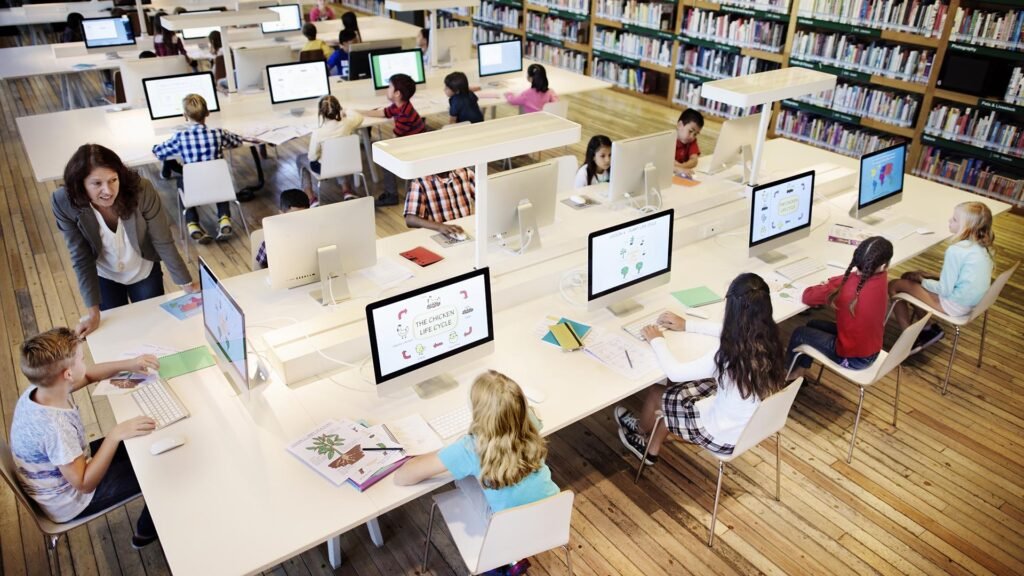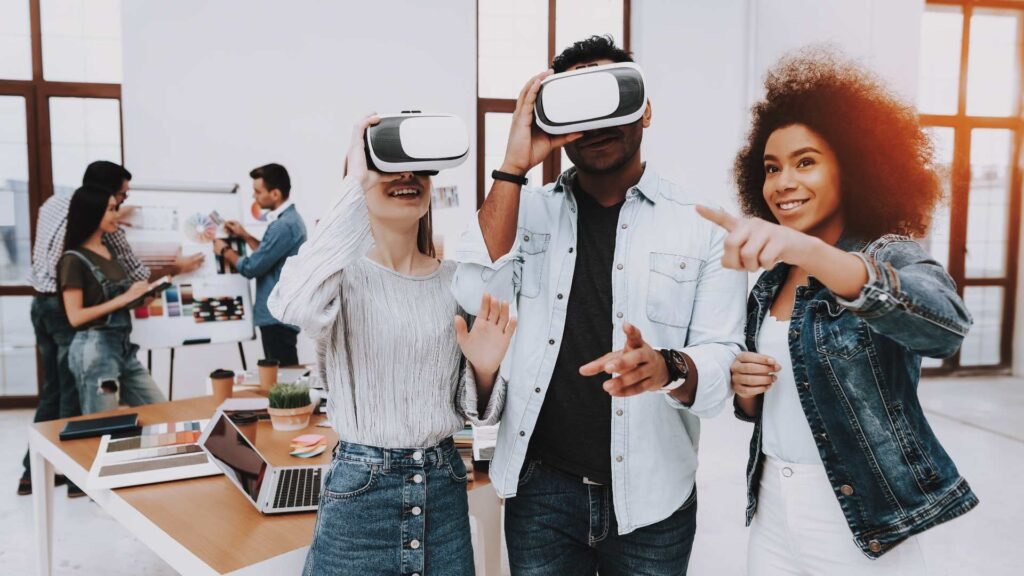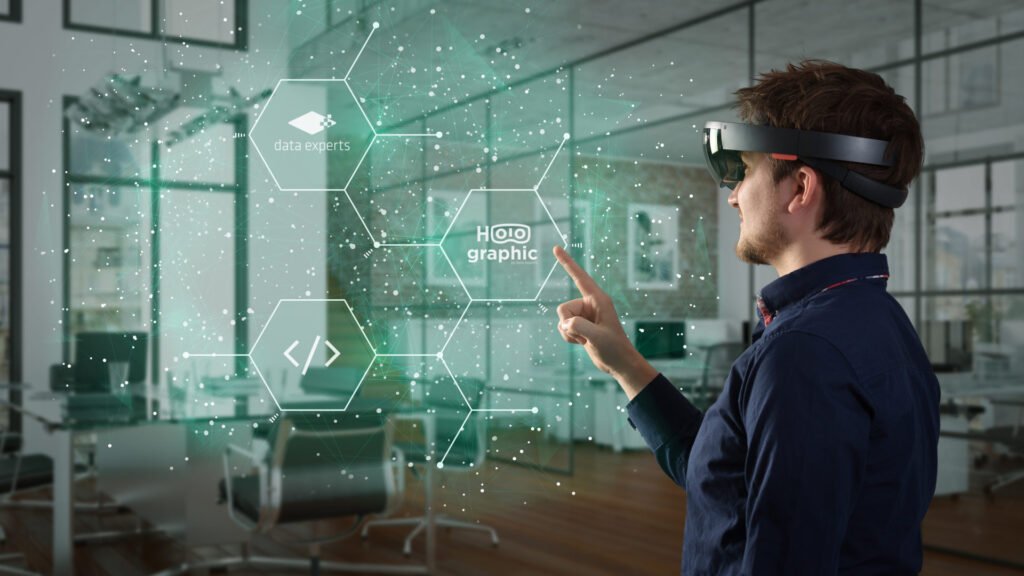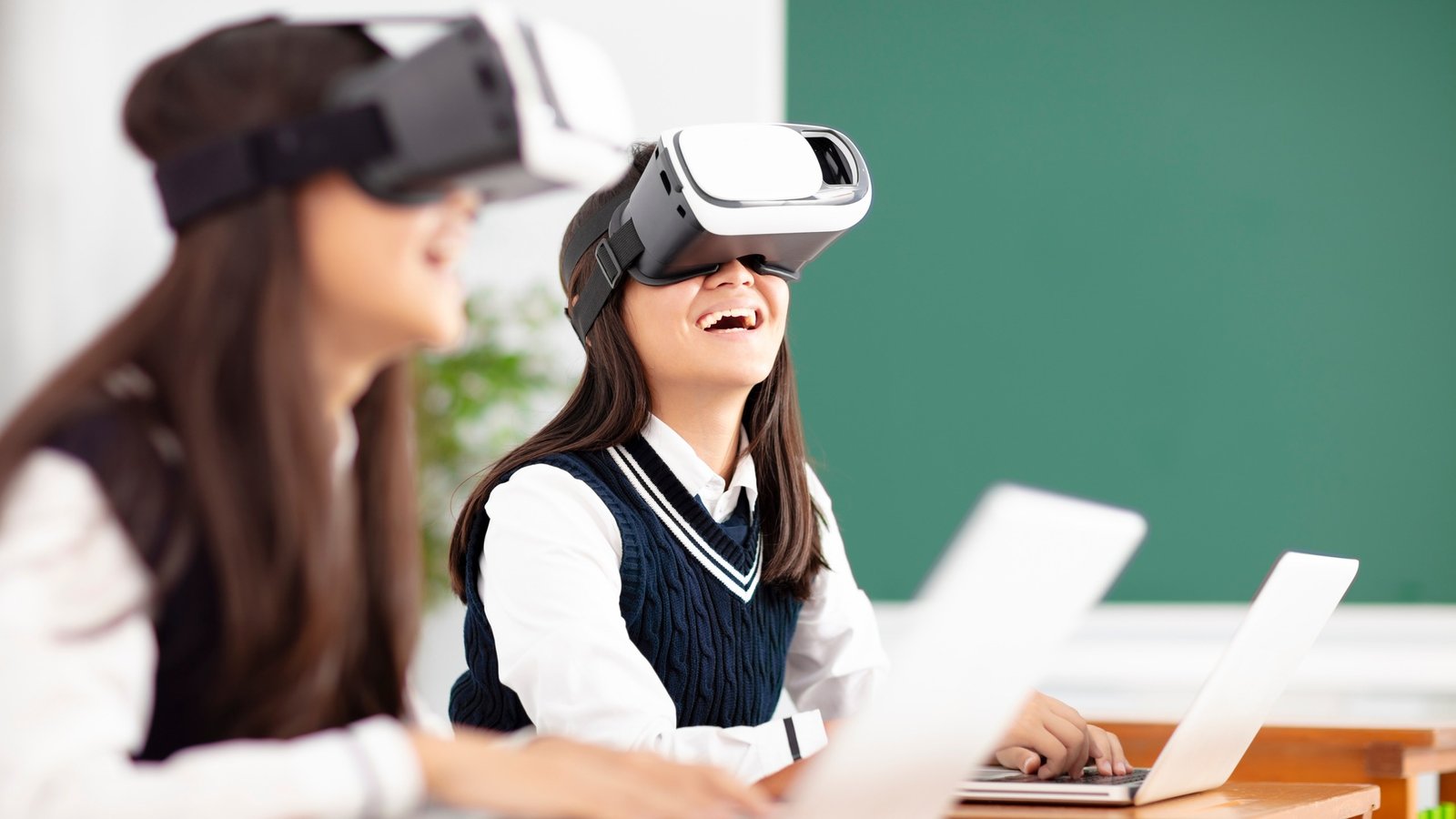Extended Reality in Education Education has not been immune to the ongoing changes in numerous industries brought about by the digital revolution. Extended Reality (XR), a catch-all term for Virtual Reality (VR), Augmented Reality (AR), and Mixed Reality (MR). XR provides new means for learners to interact, visualize, and experience information by fusing the digital and physical worlds, increasing learning’s effectiveness, immersion, and engagement. This essay investigates the use of extended reality in education, looking at its advantages, disadvantages, difficulties, and potential.

Understanding Extended Reality
The phrase “extended reality” (XR) refers to a wide range of immersive technologies, including:
Virtual Reality (VR): With the use of goggles and controllers, this technology immerses users completely in a computer-generated environment. Virtual reality (VR) allows users to interact with a 3D environment by obstructing the real world and replacing it with a digital one. Applications for education include historical reconstructions, simulations, and virtual field excursions.
Through the use of interactive, 3D representations that students may control, augmented reality (AR) can improve students’ comprehension of difficult ideas.
The Evolution of XR in Education
This paradigm has changed with the introduction of XR technologies, which provide dynamic and interactive learning opportunities.
Early Adoption: VR simulations and AR learning applications were the main focus of early adopters of XR in education. To determine how well XR engages students and improves learning results, this phase includes pilot projects and experimental applications.
Virtual Classrooms
The development of immersive virtual classrooms that allow students from various geographic places to come together. Students can participate in lectures, discussions, and group projects in these virtual classrooms just as if they were in the same room.

Immersive Learning Experiences
Creating immersive learning environments is one of the most interesting uses of XR in education. Students can learn more deeply about subjects that might be challenging to understand through typical teaching approaches by investigating these surroundings.
Interactive Simulations
XR offers a secure and regulated setting for students to hone their talents. sims are an effective teaching tool that use technology to produce engaging and dynamic lessons. These simulations allow students to participate in experiential learning that improves comprehension and retention by modeling real-world situations or abstract ideas.

Enhanced Engagement and Motivation
XR, which provides immersive and interactive experiences, makes learning more fascinating and enjoyable. This enhanced involvement may result in better motivation and a stronger desire to study.
Improved Understanding and Retention
Immersion learning environments have been shown to improve understanding and recollection of content. Through the use of 3D models, simulations, and virtual worlds, students can gain a more profound comprehension of intricate ideas.

Conclusion
With its potential to improve learning outcomes, increase student engagement, and close gaps in accessibility and diversity, extended reality (XR) has great promise for revolutionizing the educational landscape. Traditional educational techniques cannot match the immersive, dynamic, and interactive learning experiences that XR offers by fusing the physical and digital realms. Augmented reality (XR) offers new ways to study, explore, and build skills. Examples include virtual field excursions, immersive simulations, and virtual classrooms.
FAQs
What is Extended Reality (XR)?
XR technologies provide interactive, immersive experiences by fusing the real and virtual worlds. Virtual reality (VR) transports users to a fully digital world; augmented reality (AR) superimposes digital data on the actual world.
How is XR used in education?
Offering virtual field trips and simulations to investigate historical locations, space exploration, or biological systems are examples of immersive learning experiences.
Interactive simulations: These provide a secure, regulated setting for students to hone their talents in areas like engineering designs or medical procedure
What are the benefits of using XR in education?
Among the advantages of XR in teaching are:
Enhanced Engagement: XR increases student motivation by making learning more engaging and entertaining.
Better comprehension and Retention: Immersion learning environments increase students’ comprehension and retention of difficult ideas.
Inclusivity and Accessibility: XR educates students who might face obstacles connected to their health, finances, or location.
Safe Learning Environment: Without running any real-world dangers, students can practice their skills.
What are the challenges of implementing XR in education?
Among the difficulties are:
Technical Problems: Device compatibility, latency, and application compatibility problems can all hinder learning
How can educators prepare to use XR in the classroom?
Teachers can get ready by:
Getting Trained: Participating in professional development workshops to gain the know-how required to integrate XR technologies into teaching methodologies.
XR Tool Experimentation: Trying out various XR apps and gadgets to learn about their strengths and weaknesses.
Creating XR content involves working with content producers or utilizing XR educational materials that are in line with curriculum.



